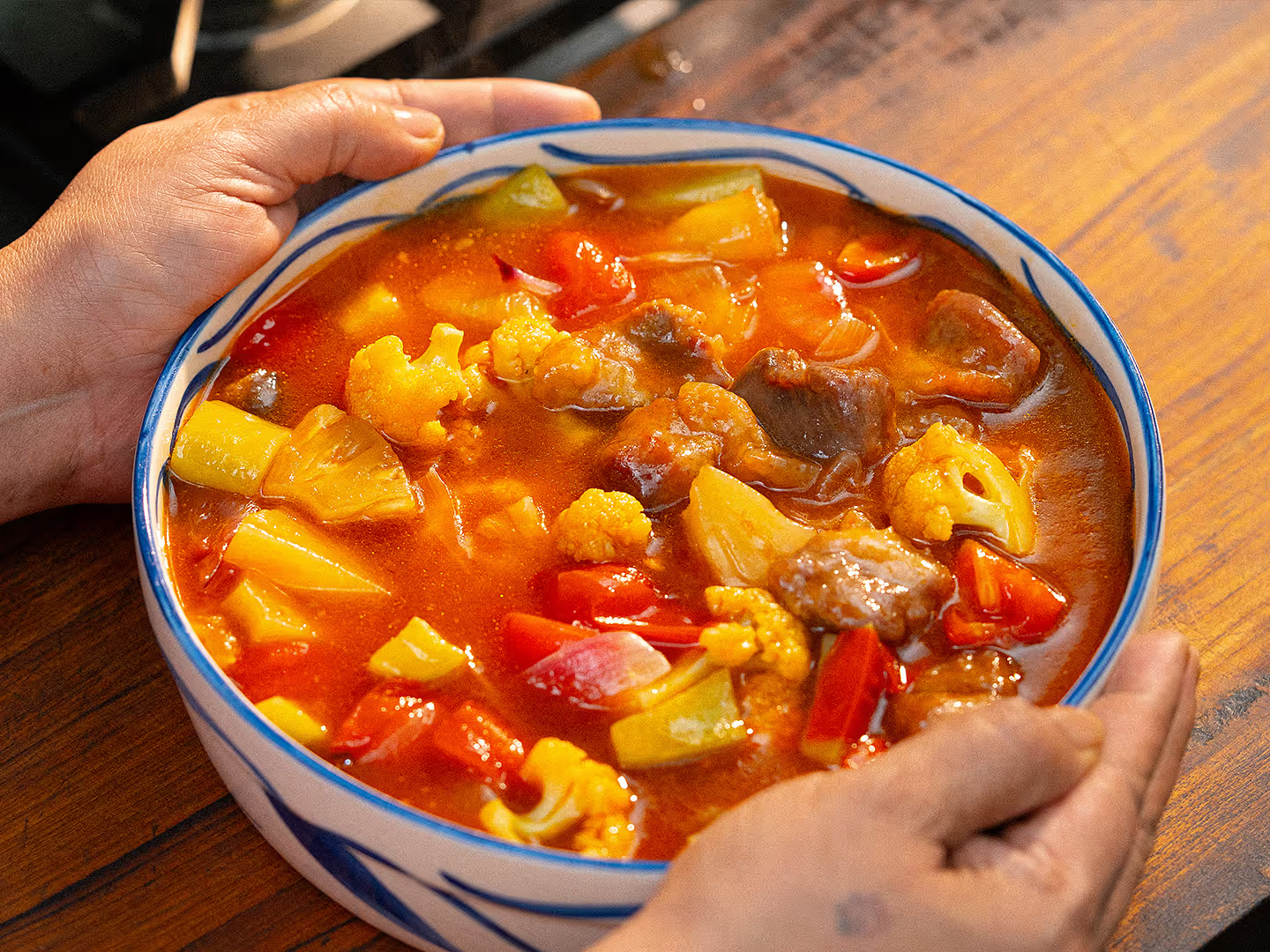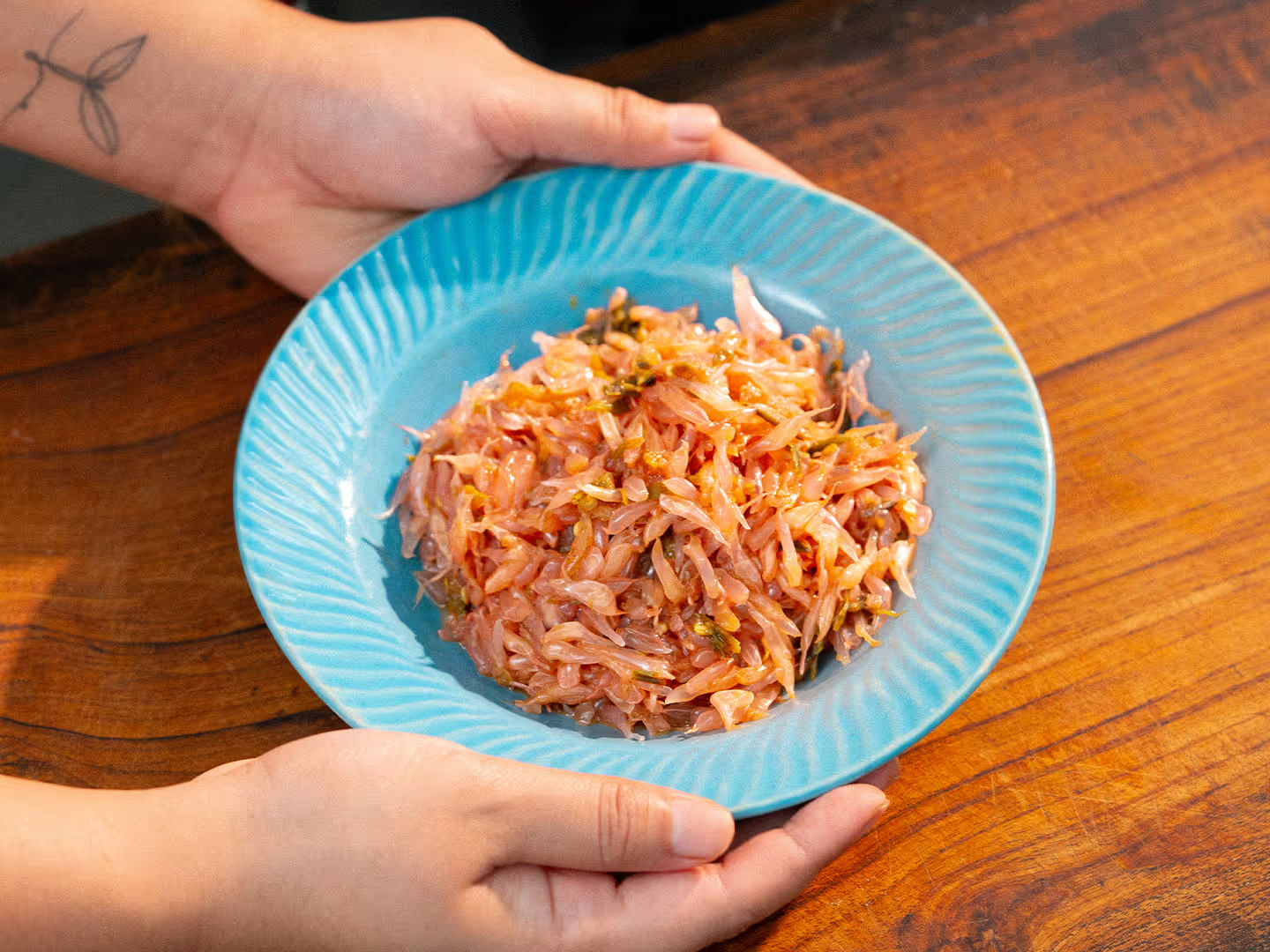Kochur Loti Chingri diye
Taro stolons cooked with mustard and prawns
- Cooking time90 mins
- Calories170kcal
Kochur loti is something we grew up eating in our Bangal (East Bengali immigrant) household. Even as children we loved the loti's (taro stolon's) meaty texture combined with the pungency of the mustard. Even better if it had prawns in it! It is, in my opinion, one of the tastiest recipes from my thamma's (paternal grandmother's) vast repertoire. I have never eaten a tastier kochur loti dish. We are happy to finally share this with everyone.
❓What exactly is kochur loti ("stolon" in English)? Taro plants propagate through thin runners called stolon that grow horizontally from the plant base. Where the stolon touches the soil, it develops adventitious roots and grows into a new plant.
❓The kochu (taro) plant is believed to be native to East and South East Asia, but is now found all over the world. In Bengal there are many, many varieties of this plant—not all of them are eaten. Of the ones that are eaten some varieties are preferred for their stalks, some for their tubers, some for their stolons. Every part of the plant—leaf, stalk, stolon, tuber, and even the flowers—is eaten. The different varieties of kochu produce different kinds of tubers too—gathi kochu, shola kochu, maan kochu, dudh kochu, ol kochu and so on. They are all unique and are used in different ways in cooking.
🌾 We've served kochur loti today with hand-pounded Dudhersar rice from Amar Khamar. It pairs very well with the sharp flavours of mustard in this dish.
Frequently Asked Questions
Books in this recipe
Ingredients
- 265 g kochur loti (cleaned; from 355 g bundles)
- 500 g hot water
- 5 g black mustard
- 5 g yellow mustard
- 45 g total mustard oil
- 125 g begun
- 2 dried red chillies
- ¼ tsp kaalo jeere
- 45 g onion (sliced)
- 3 g garlic (minced)
- 25 g grated coconut
- 100 g prawns (cleaned and deveined)
- 16 g total salt
- 2 g total turmeric
- ¼ tsp red chilli powder
- 15 g total sugar
- 6 g total green chillies
Method
- Soak brown and yellow mustard in water for 2 hours.
- Working in small sections, scrape the outer brown film of the kochur loti. Divide in 4-cm-long segments.
- Wash thoroughly, changing the water multiple times, then boil for about 3 mins with 3 g salt, 2 g turmeric and 500 ml water. Strain and set aside.
- Cut the brinjal in 4-cm wedges, chop green chillies, slice onions and mince garlic.
- Grind the mustard seeds to a smooth paste with a green chilli.
- Heat 8 g mustard oil in a kadai. Fry brinjal until they are golden (about 6 mins). Set aside.
- Add another 7 g mustard oil to the pan. Add the kochur loti along with ¼ tsp each of salt and red chilli powder, and 2 g sugar. Fry for about 8 mins until lightly coloured. Set aside.
- Now add the remaining mustard oil (30 g) to the pan. Temper with dried red chillies and kaalo jeere.
- Add the onions and fry until golden. Add garlic and fry for another couple of minutes.
- Add grated coconut and fry on medium heat until nutty.
- Meanwhile, smear the prawns with a pinch of salt and turmeric. When the coconut has fried, add the prawns to the pan and cook for about 3–4 mins.
- Add mustard paste, and the remaining salt (13 g), sugar (13 g) and turmeric (¼ tsp). Add splashes of water as required, braise the mustard paste until its raw smell goes away.
- Add the kochur loti and cook everything together for about 5 mins or so.
- Add the fried brinjal and continue frying until the bottom starts to lightly caramelise (about 10 mins).
- Finish with chopped green chillies, and turn off the heat.
- We've served kochur loti with the robust hand-pounded Dudhersar rice from Amar Khamar, which perfectly complements the sharp flavour of mustard in this dish.































